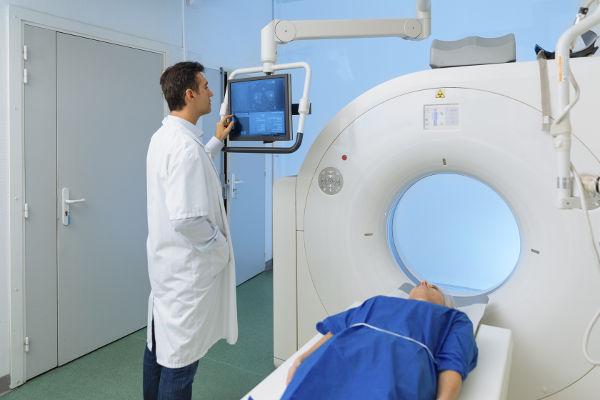If you happen to be sick with sinusitis-like symptoms, such as nasal congestion, facial pain or headaches, a proper diagnosis will be key in order to have you treated with a certain level of success. However, sinus infections are often misleading and can be hard to detect even by qualified professionals, which can affect both the prognosis (outlook) and the disease progression (in the worst-case scenario, turning into a chronic condition). Thus, how do doctors manage to rule out other diseases and determine that you have sinusitis?
In general, when you visit your general practitioner, an ear, nose and throat (ENT) specialist or an allergist, he or she will ask you about your medical history; the questions will revolve around your symptoms and their duration, but you may also be asked if you had allergic episodes in the past, recent colds and about the existence of physical traumas or abnormalities in your nasal or paranasal areas.
In addition, your doctor will most likely perform a physical examination, including nose, eyes, ears, throat, chest and skin. Both the information provided and the checkup could help your practitioner diagnose a sinus infection, but there are times when further tests are necessary to identify the cause of the problem.
Here are the most common ones:
– Bacterial culture: if the doctor suspects that your sinusitis may be triggered by bacteria, he or she may have you tested for a bacterial culture. In case the test is positive, the physician will look for the best antibiotic to fight the kind of bacterium that’s troubling you.
– Nasal endoscopy: by using a medical device (a thin tube connected to a camera), the doctor can capture images of the inside of your nose and, thus, determine how swollen your nasal mucosa is.
– Sinus puncture: It’s less common, but a sinus puncture (obtaining a liquid sample from the sinuses) can also help identify the kind of germ that is bothering you

In addition, there are different tests that use imaging technique to aid being diagnosed, such as:
– X-rays: you surely know about this test, which uses electromagnetic radiation to produce images that can detect bone fractures and breaks, tooth problems and certain kinds of tumors, among other elements.
– Nasal ultrasound scans: Unlike X-rays, nasal ultrasound scans use sound waves to create images. In this particular case, the test can help professionals spot any abnormality in the nose.
– CT scans: basically, it’s an X-ray test that uses a special equipment which allows for capturing multiple images of the inside of the body.
– MRI scans: magnetic resonance imaging is a technique that uses radio waves and powerful magnetic fields to produce detailed pictures of internal body structures.
Needless to say, you won’t probably need most of those tests to get your sinusitis properly diagnosed. It will all depend on how effective the treatment you are prescribed turns out to be and if you need additional help to get rid of your condition.
In a nutshell, we want nothing but pinpoint again the importance of making a correct diagnosis as sinusitis can be such a misleading disease. Just keep in mind that its symptoms can sometimes match those of severe conditions, even life-threatening ones. More people than you might imagine suffer the consequences of wrong diagnoses regarding sinusitis-like symptoms that, in the end, can turn out to be illnesses as critical as brain tumors.
Thus, whenever you start being treated for sinusitis, be sure to monitor your symptoms and how they evolve over time.
